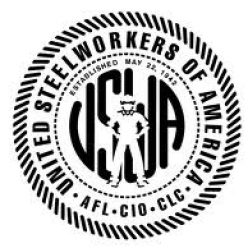The American Institute of Steel Construction, LLC
(petitioner), on February 4, 2019, filed antidumping (AD) and countervailing
duty (CVD) petitions on imports of certain fabricated structural steel from
Canada, China and Mexico.
The U.S. AD law imposes special tariffs to counteract
imports that are sold in the United States at less than “normal value.” The
U.S. CVD law imposes special tariffs to counteract imports that are sold in the
United States with the benefit of foreign government subsidies. For AD/CVD
duties to be imposed, the U.S. government must determine not only that dumping
and/or subsidies are occurring, but also that there is “material injury” (or
threat thereof) by reason of the dumped and/or subsidized imports. Importers
are liable for any potential AD/CVD duties imposed. In addition, these
investigations could impact purchasers by increasing prices and/or decreasing
supply of certain fabricated structural steel.
Scope
The merchandise covered by this investigation includes
carbon and alloy (including stainless) steel products such as angles, columns,
beams, girders, plates, flange shapes (including manufactured structural shapes
utilizing welded plates as a substitute for rolled wide flange sections),
channels, hollow structural section (HSS) shapes, base plates, plate-work
components, and other steel products that have been fabricated for assembly or
installation into a structure (fabricated structural steel). Fabrication
includes, but is not limited to, cutting, drilling, welding, joining, bolting,
bending, punching, pressure fitting, molding, adhesion, and other processes.
Fabricated structural steel products included in the
scope of this investigation are products in which: (1) iron predominates, by
weight, over each of the other contained elements; and (2) the carbon content
is two percent or less by weight.
Fabricated structural steel is covered by the scope of
the investigation regardless of whether it is painted, varnished, or coated
with plastics or other metallic or non-metallic substances. Fabricated
structural steel may be either assembled; disassembled, but containing
characteristics or items, such as holes, fasteners, nuts, bolts, rivets,
screws, tongue and grooves, hinges, or joints, so that the product(s) may be
joined, attached, or assembled to one or more additional product(s); or
partially assembled, such as into modules, modularized construction units, or
sub-assemblies of fabricated structural steel.
Products under investigation include carbon and alloy
steel products that have been fabricated for erection or assembly into
structures, including but not limited to, buildings (commercial, office,
institutional, and multi-family residential); industrial and utility projects;
parking decks; arenas and convention centers; medical facilities; and ports,
transportation and infrastructure facilities.
Subject merchandise includes fabricated structural
steel that has been assembled or further processed in the subject country or a
third country, including but not limited to painting, varnishing, trimming,
cutting, drilling, welding, joining, bolting, punching, bending, beveling,
riveting, galvanizing, coating, and/or slitting or any other processing that
would not otherwise remove the merchandise from the scope of the Investigation
if performed in the country of manufacture of the fabricated structural steel.
Fabricated structural steel may be attached, joined,
or assembled with non-steel components at the time of importation. The
inclusion, attachment, joining, or assembly of non-steel components with
fabricated structural steel does not remove the fabricated structural steel
from the scope.
All products that meet the written physical
description are within the scope of this investigation unless specifically
excluded. Specifically excluded from the scope of this investigation is certain
fabricated steel concrete reinforcing bar (“rebar”). Fabricated rebar
is excluded from the scope only if (i) it is a unitary piece of fabricated
rebar, not joined, welded, or otherwise connected with any other steel product
or part; or (ii) it is joined, welded, or otherwise connected only to other
rebar.
Also excluded from this scope is fabricated structural
steel used for bridges and bridge sections. For the purpose of this scope,
fabricated structural steel used for bridges and bridge sections is defined as
fabricated structural steel that is used in bridges and bridge sections and
that conforms to American Association of State and Highway and Transportation
Officials (“AASHTO”) bridge construction requirements or any state or
local derivatives of the AASHTO bridge construction requirements.
Also excluded from this scope are pre-engineered metal
building systems. For the purposes of this scope, pre-engineered metal building
systems are defined as complete metal buildings that integrate steel framing,
roofing and walls to form one, pre-engineered building system and are designed
and manufactured to Metal Building Manufacturers Association guide
specifications. Pre-engineered metal building systems are typically limited in
height to no more than 60 feet or two stories.
Also excluded from this scope are steel roof and floor
decking systems designed and manufactured to Steel Deck Institute standards.
Also excluded from the scope are open web steel bar
joists and joist girders that are designed and manufactured to Steel Joist
Institute specifications.
The products subject to the investigation are
currently classified in the Harmonized Tariff Schedule of the United States
(HTSUS) under subheadings: 7308.90.9590, 7308.90.3000, and 7308.90.6000.
The products subject to the investigation may also
enter under the following HTSUS subheadings: 7216.91.0010, 7216.91.0090,
7216.99.0010, 7216.99.0090, 7228.70.6000, 7301.10.0000, 7301.20.1000,
7301.20.5000, 7308.40.0000, 7308.90.9530, and 9406.90.0030.
The HTSUS subheadings above are provided for
convenience and customs purposes only. The written description of the scope of
the investigation is dispositive.
Alleged
Dumping Margins
The petitioner alleges the following dumping margins:
- Canada: 31.46
percent
- Mexico: 41.39
percent
- China: 218.85
percent
The petitioner identified numerous possible subsidy
programs, but did not allege specific subsidy rates.
Estimated
Schedule of Investigations
- February 4, 2019
– Petition is filed
- February 25, 2019
– DOC initiates investigation
- February 26, 2019
– ITC staff conference
- March 21, 2019 –
Deadline for ITC preliminary injury determinations
- May 1, 2019 –
Deadline for DOC preliminary CVD determination, if not postponed
- July 5, 2019 –
Deadline for DOC preliminary CVD determination, if fully postponed
- July 15, 2019 –
Deadline for DOC preliminary AD determination, if not postponed
- September 3, 2019
– Deadline for DOC preliminary AD determination, if fully postponed
